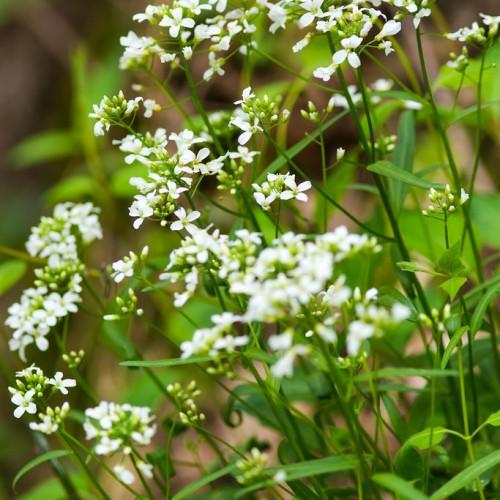
Bulbous Bitter Cress
Cardamine bulbosa
Also Known As - Spring CressWatering:
Minimal
Hardiness Zone:
Sun:
full sun,part shade
Leaf:
Yes
Growth Rate:
Low
Drought Tolerant:
Yes
Salt Tolerant:
Yes
Invasive:
Yes
Care Level:
Medium
watering
This Alpine Bitter Cress plant should be watered just enough to keep the soil moist but not soggy. To determine when to water, stick your finger into the soil up to the first knuckle. If the soil is damp, then do not water. If it is dry, then water lightly. Water the plant every 7-10 days during the growing season and monthly in the winter, or whenever the soil becomes dry. It is important to monitor the soil moisture levels and make adjustments accordingly.
sunlight
Alpine Bitter Cress requires full sunlight in order to thrive. As a sun-loving plant, it should be grown in a location that receives direct sunlight for at least 6-8 hours per day. If grown in partial sun, the plant may become weak and may not produce flowers. For optimal results, it should be planted in an area that receives full sun all day. It can tolerate some shade but will not reach its full potential if not grown in plenty of sunlight.
pruning
Alpine Bitter Cress should be pruned in late spring right before the plant starts to blossom. It is best to remove only the dead or diseased stems in order to maintain the plant’s shape and health. Be sure to sterilize your pruning shears beforehand with rubbing alcohol or an anti-fungal solution. Prune sparingly, as too much pruning can cause the plant to become thin and spindly. Pruned stems should also be removed from the area as they can harbor diseases and pests.
